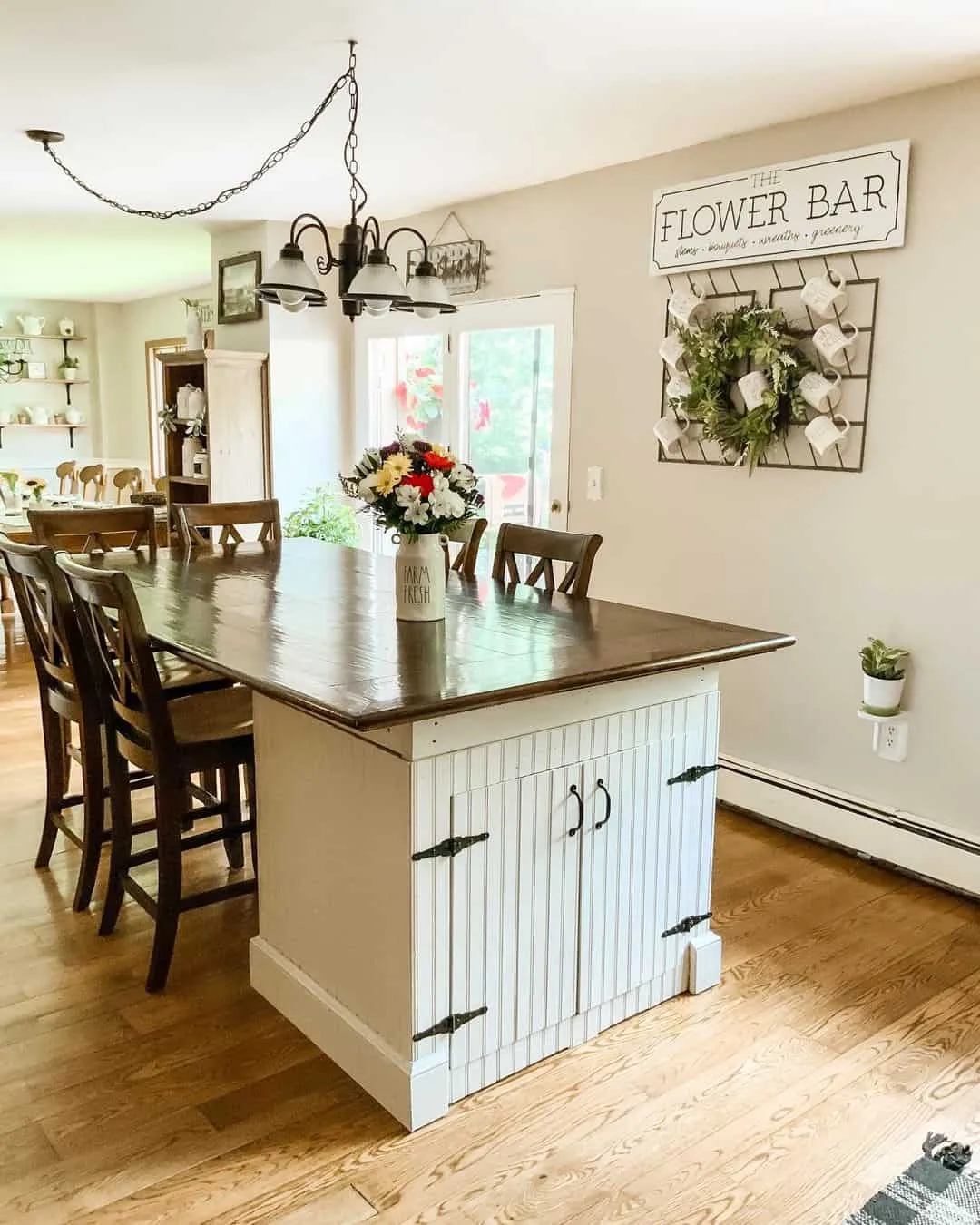Farmhouse Kitchen Decor Top 7 Ideas
Farmhouse kitchen decor embodies warmth, simplicity, and a connection to nature. It’s a style that emphasizes functionality while embracing a cozy, inviting atmosphere. If you’re looking to transform your kitchen into a charming farmhouse haven, you’re in the right place. This guide offers the top 7 ideas for achieving that perfect rustic-chic aesthetic. From open shelving to vintage finds, we’ll explore essential elements to create a beautiful and functional farmhouse kitchen. Embracing the farmhouse style is all about blending comfort with classic design, creating a space that feels both timeless and welcoming for both cooking and gathering. Get ready to discover how to bring the heart of the countryside into your home!
Rustic Open Shelving
Open shelving is a cornerstone of farmhouse kitchen design, offering both practicality and visual appeal. It replaces upper cabinets with open shelves, allowing you to display dishware, cookbooks, and decorative items. This design choice not only makes essentials easily accessible but also adds a touch of rustic charm to your space. Open shelves create an airy feel and contribute to a more relaxed and lived-in atmosphere, which is key to achieving the farmhouse aesthetic. This design also encourages you to keep your kitchen organized and visually appealing, blending storage with style and functionality.
Choosing the Right Shelving
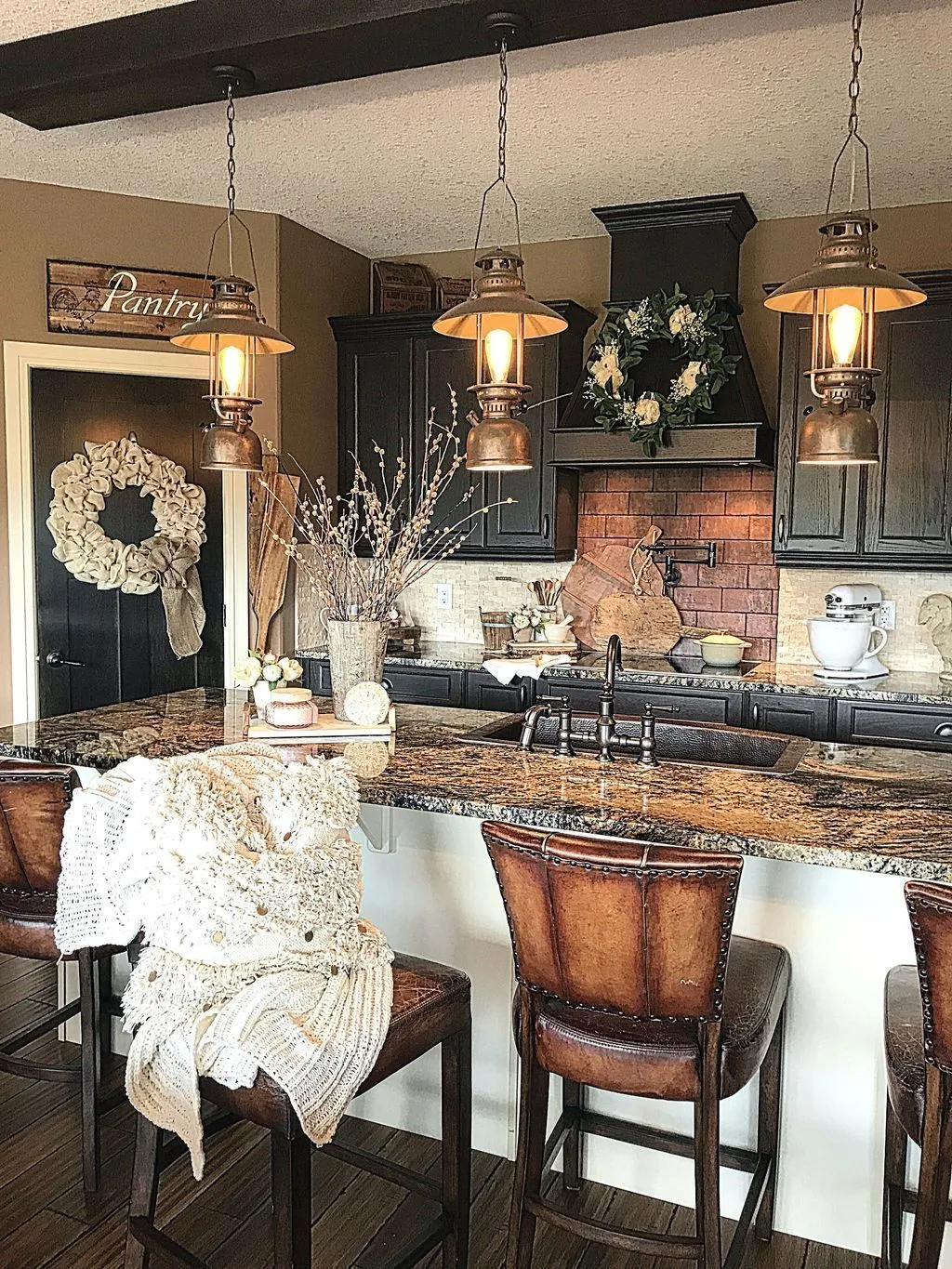
When choosing open shelving, consider materials like reclaimed wood, which adds instant character and a sense of history, or simple, painted wood for a cleaner look. The thickness and depth of your shelves should be proportional to the space and the items you plan to display. Ensure that the shelving is securely mounted to prevent accidents. Also, consider the finish; a distressed or weathered look will amplify the farmhouse vibe, while a stained finish can bring warmth and contrast. Think about how the shelves will complement the rest of your kitchen decor, as they should blend seamlessly with the overall style.
Styling Your Shelves
Styling open shelves is an art form in itself. Mix practical items like everyday dishes with decorative elements. Group items of similar colors or materials to create visual harmony. Add interest with varying heights; use cookbooks, platters, and decorative accents like small plants or vintage finds to create depth. Avoid overcrowding; space items thoughtfully to create an open, inviting feel. Rotate your displayed items seasonally to keep the look fresh. A well-styled shelf adds personality to your kitchen and highlights your personal taste, while also serving as a practical storage solution.
Adding a Farmhouse Sink
A farmhouse sink, also known as an apron-front sink, is a statement piece that immediately anchors the farmhouse aesthetic in any kitchen. Its distinctive design, with the front of the sink exposed, adds a touch of classic charm and a sense of nostalgia. Farmhouse sinks are typically larger and deeper than standard sinks, offering plenty of space for washing dishes and preparing food. This sink type is not just about aesthetics; it’s also highly functional, making it a perfect addition to a busy kitchen. The visual impact of a farmhouse sink is undeniable, transforming the kitchen into a welcoming, practical space.
Materials and Styles
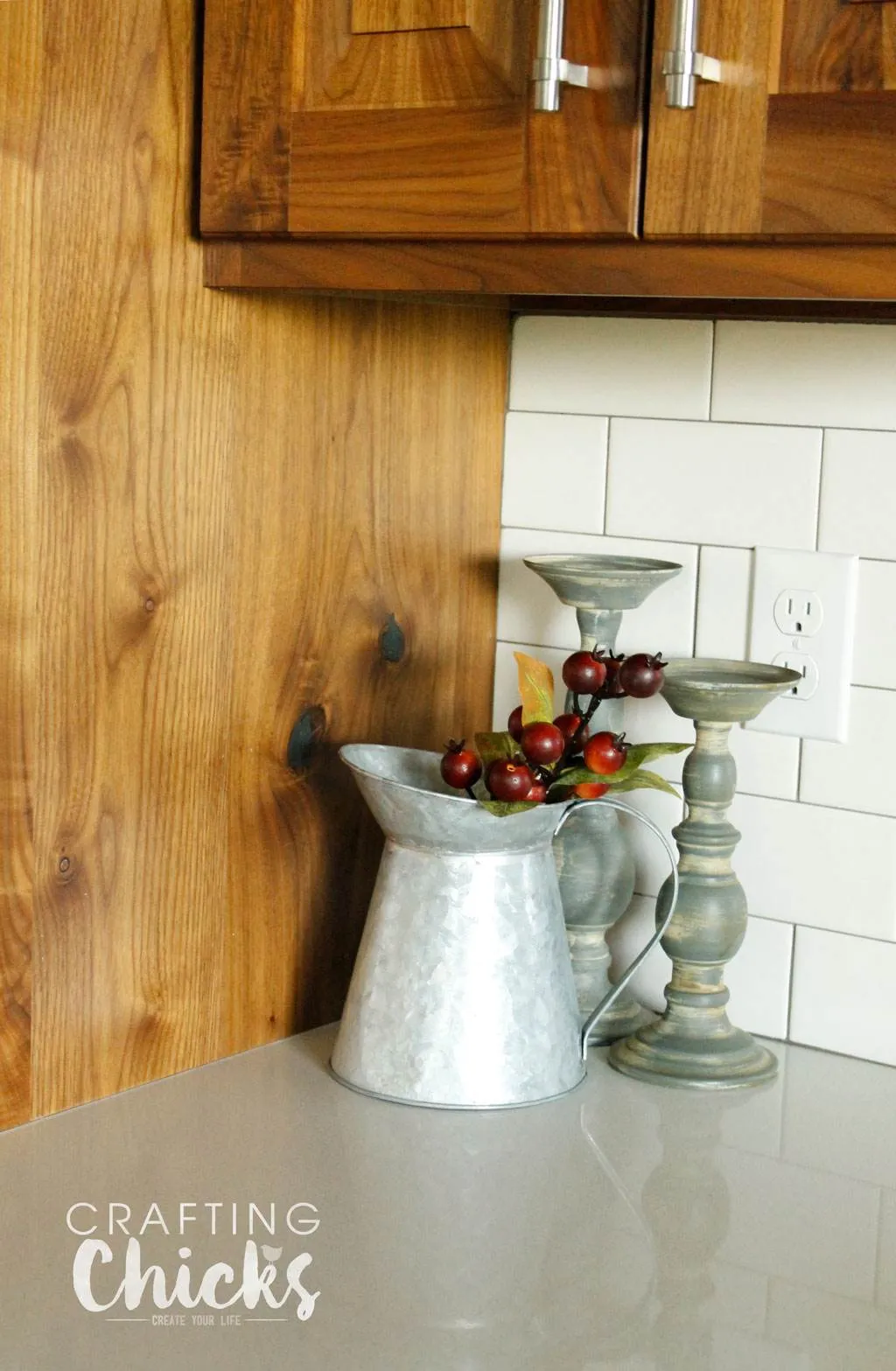
Farmhouse sinks come in various materials, each with its unique charm. Fireclay is a popular choice, known for its durability and classic look. Stainless steel offers a sleek, modern twist while still fitting the farmhouse style. Copper sinks provide a warm, rustic feel and develop a beautiful patina over time. Consider the material’s maintenance requirements and how it complements your existing kitchen design. The style of the apron-front can also vary; choose a design that aligns with your overall aesthetic, from a simple, clean line to a more ornate, detailed front. Your choice of material and style will greatly influence the overall look of your kitchen.
Installation and Maintenance
Installing a farmhouse sink typically requires professional help due to its size and the need for precise measurements. Ensure your cabinets can support the weight of the sink, especially when it’s filled with water. Follow the manufacturer’s instructions carefully to prevent any issues. For maintenance, clean your sink regularly with the appropriate cleaning products for the material. Avoid harsh chemicals or abrasive cleaners that could damage the surface. Regular care will keep your farmhouse sink looking beautiful for years to come. Protect the sink from scratches and damage by using a sink grid to prevent damage to the surface.
Incorporating Wooden Elements
Wood is a fundamental element in farmhouse kitchen decor, bringing warmth, texture, and a connection to nature. It’s used in various forms, from countertops and cabinetry to flooring and decorative accents. The natural grain and color variations of wood add depth and character, creating a welcoming and inviting space. Incorporating wood is about more than just appearance; it creates a sense of history and comfort, which is central to the farmhouse style. Whether used in large pieces or small accents, wood helps to soften the space and adds a layer of organic warmth to your kitchen.
Types of Wood to Use
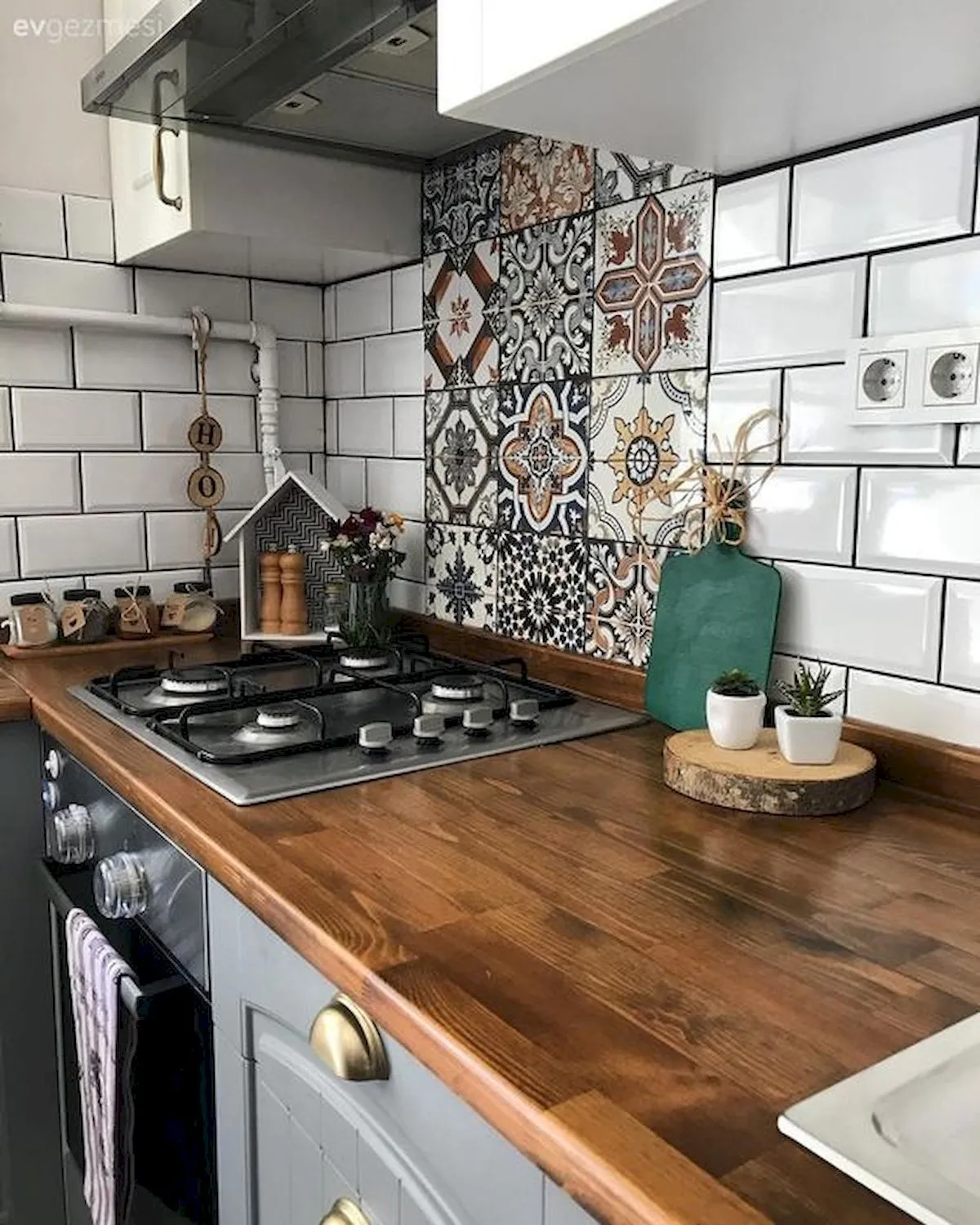
When selecting wood for your farmhouse kitchen, consider options like reclaimed wood for an authentic, aged look. Butcher block countertops offer a classic, functional surface. Solid wood cabinets bring a durable and timeless touch to the space. For flooring, wide plank wood or wood-look tiles add to the rustic charm. The type of wood you choose will influence the overall aesthetic of your kitchen. Consider the durability, maintenance requirements, and how it harmonizes with the other materials and colors in your kitchen. Stains and finishes can also be applied to achieve the desired look, from a natural, raw appearance to a more polished finish.
Ways to Integrate Wood
Integrate wood throughout your kitchen to create a cohesive design. Use wooden countertops with a farmhouse sink. Add wood accents like cutting boards, wooden utensils, and decorative bowls. Consider wooden open shelving or a wooden kitchen island. For larger elements, choose wooden cabinetry and flooring that will serve as the foundation of your design. Wooden elements can be contrasted with lighter colors to create balance and add visual interest. The combination of wooden features with other materials like stone or metal can create a harmonious and inviting space.
Using Vintage Decor
Vintage decor is an essential component of farmhouse style, adding character, history, and a sense of lived-in comfort. Incorporating vintage pieces gives your kitchen a unique personality and reflects a love for the past. Antique finds add a touch of warmth and charm that’s impossible to replicate with new items. It’s a great way to showcase your individual style, making your kitchen feel like a curated space that reflects your unique personality and history. Embrace vintage finds to bring a sense of storytelling to your kitchen, blending functionality with nostalgia.
Where to Find Vintage Items
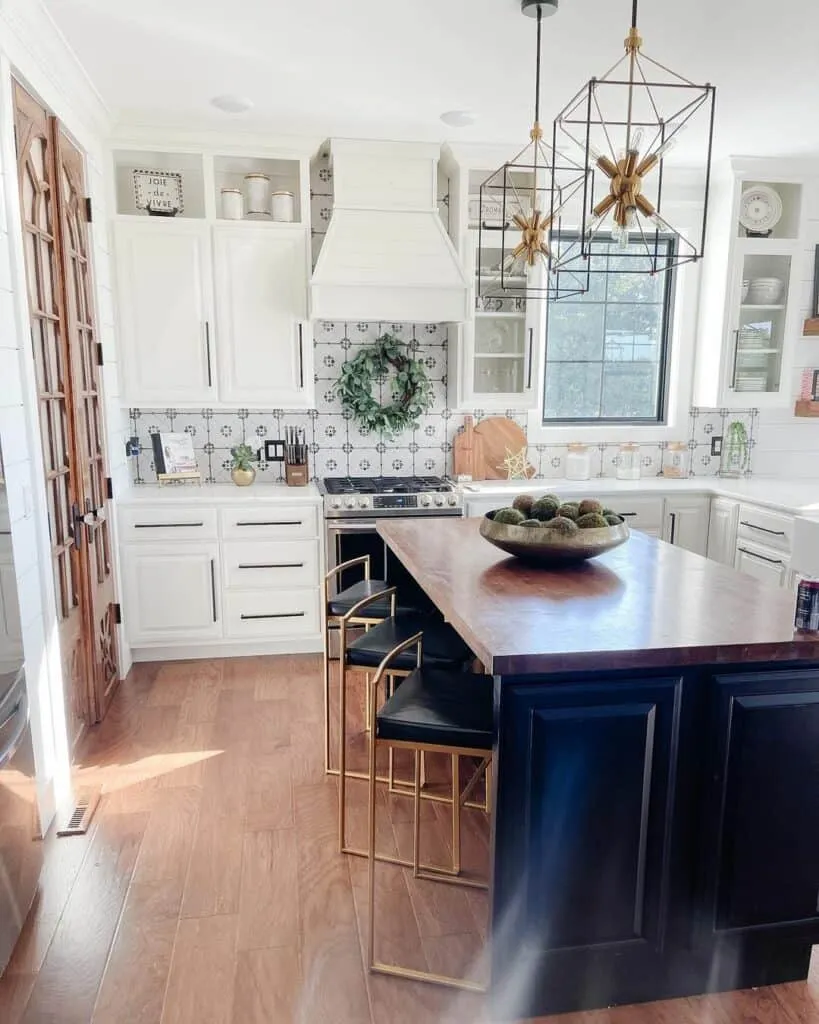
Discover vintage treasures at flea markets, antique shops, and estate sales. Online marketplaces like Etsy and eBay offer a vast selection of unique finds. Garage sales and thrift stores are also great places to hunt for budget-friendly vintage items. Look for items with character, like chipped enamelware, vintage signs, or antique kitchen tools. Don’t be afraid to repurpose items, using old crates as storage or repurposing old doors as decor. The thrill of the hunt is part of the fun. The key is to find items that resonate with your style and complement the overall aesthetic of your kitchen.
Tips for Displaying Vintage Items
When displaying vintage items, create vignettes on open shelves, countertops, or within glass-front cabinets. Mix and match items to create visual interest, using different sizes, shapes, and textures. Group similar items together to create a cohesive display, such as a collection of vintage scales or a display of antique jars. Use vintage items to add function to your decor, like displaying utensils in a vintage crock. To make the most of your finds, incorporate them into your daily routines. Vintage decor is meant to be used and enjoyed, adding a touch of history and personality to your kitchen.
Adding a Kitchen Island
A kitchen island is a practical and stylish addition to any farmhouse kitchen, offering extra counter space, storage, and a central gathering spot. It’s a versatile element that can be customized to meet your specific needs and style preferences. Whether used for food preparation, casual dining, or additional storage, a well-designed island enhances functionality while complementing the farmhouse aesthetic. The presence of a kitchen island transforms the kitchen into a communal space, perfect for both everyday meals and entertaining guests. A kitchen island enhances the overall look of your kitchen.
Island Design and Functionality
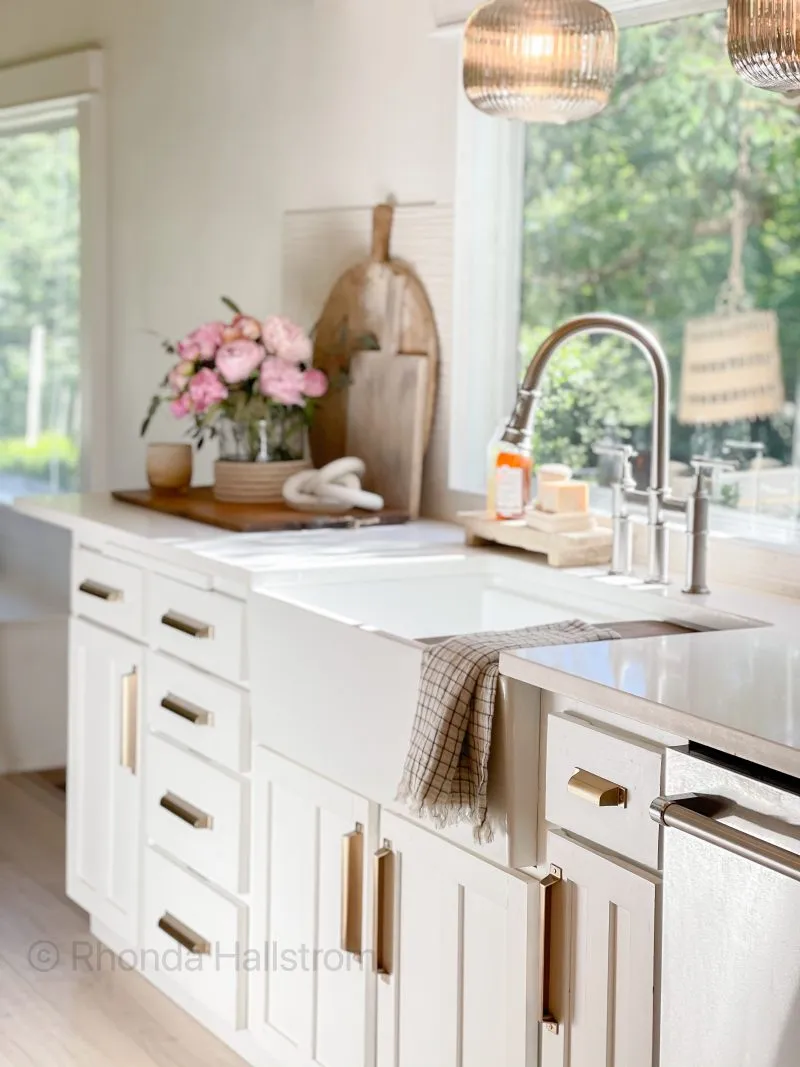
Design your kitchen island to match your lifestyle. Incorporate a countertop with a comfortable overhang for seating. Include storage solutions like drawers, cabinets, or open shelving. Integrate appliances such as a cooktop, sink, or dishwasher to improve functionality. Ensure the island’s size is proportional to your kitchen space to ensure adequate space. Consider adding details that complement the farmhouse style, such as a butcher block countertop, shiplap paneling, or a distressed finish. The key is to balance practicality with aesthetic appeal. Your kitchen island should enhance your kitchen’s function and style.
Choosing the Right Materials
The materials you choose for your kitchen island are crucial to its overall aesthetic and durability. Opt for a butcher block countertop for a classic farmhouse look or a stone countertop like granite or marble for a touch of elegance. Use wood for the island’s base or incorporate shiplap or beadboard for added texture. Choose durable materials that can withstand daily use. Consider the overall style of your kitchen and how the materials will complement the existing design. The right choice of materials will ensure that your island will be a durable and beautiful addition to your farmhouse kitchen.
Incorporating Natural Light
Natural light is critical in farmhouse kitchens, contributing to a bright, airy, and welcoming atmosphere. Maximize the amount of natural light that enters your kitchen by carefully considering window treatments, lighting fixtures, and the layout of your space. Natural light not only enhances the aesthetic appeal of your kitchen but also creates a more pleasant environment for cooking, dining, and gathering. A kitchen filled with natural light feels more open, cheerful, and connected to the outdoors.
Window Treatments and Lighting
Choose window treatments that allow natural light to filter through. Consider sheer curtains, linen drapes, or wooden blinds to soften the light while maintaining privacy. Supplement natural light with a combination of ambient, task, and accent lighting. Use pendant lights over the kitchen island, recessed lighting in the ceiling, and sconces near the sink. Select fixtures that complement the farmhouse style, such as those with metal finishes or a vintage-inspired look. Strategically placed lighting will enhance the overall brightness of the kitchen and create a warm and inviting atmosphere.
Maximizing Natural Light
To maximize natural light, keep windows clean and unobstructed. Use light-colored walls and cabinetry to reflect natural light. Consider adding a skylight if possible. Position seating areas and work surfaces near windows to take advantage of the available light. Avoid heavy or dark window treatments that block natural light. By carefully selecting your window treatments, lighting, and layout, you can transform your kitchen into a bright and welcoming space. Ensure that your kitchen feels open and airy by maximizing the natural light.
Using Neutral Colors
Neutral colors form the backbone of farmhouse kitchen decor, providing a calming and versatile foundation. Shades of white, beige, gray, and cream create a sense of openness and tranquility, allowing other design elements to stand out. Neutral colors help to create a classic and timeless appeal, making the kitchen feel both inviting and stylish. They provide a perfect backdrop for wooden accents, vintage decor, and pops of color from accessories, giving a clean and sophisticated look. Neutral palettes offer a sense of serenity that is central to the farmhouse aesthetic.
Color Palette Ideas
Experiment with different shades of white for walls and cabinetry, such as creamy whites, soft whites, or bright whites. Pair these with beige or light gray accents for contrast. Add pops of color with accessories like blue, green, or red. Consider a classic black and white combination with a farmhouse twist, using black accents to create a bold look. Use natural wood tones to bring warmth and texture to the space. Remember to keep the color palette cohesive, using a few complementary colors throughout the kitchen for a harmonious feel. These colors enhance the warmth of a farmhouse kitchen.
Creating a Cohesive Look
Achieve a cohesive look by using a consistent color palette throughout the kitchen. Consider how colors interact with other elements, such as flooring, countertops, and lighting fixtures. Ensure that all the elements work together to create a unified aesthetic. Introduce color through accessories like dishware, textiles, and artwork. Maintain a balance between neutral tones and accent colors to prevent the space from feeling too bland or overwhelming. The goal is to create a kitchen that is inviting, functional, and visually appealing. Ensure the overall feel is harmonious and balanced.
Adding Farmhouse Lighting
Farmhouse lighting is an essential element in achieving the desired aesthetic, offering both functionality and a touch of rustic charm. Choose fixtures that complement the overall style, with a focus on materials, finishes, and design details. From pendant lights to sconces, the right lighting can instantly transform your kitchen, creating a warm and welcoming space. With the right lighting, you can enhance the beauty of your kitchen while creating the perfect ambiance. The lighting choices make your space feel warm and inviting.
Types of Farmhouse Lighting
Consider a variety of lighting options, including pendant lights over the kitchen island or dining area, adding visual interest and focused illumination. Opt for sconces near the sink or above countertops for task lighting. Choose chandeliers with a rustic or industrial feel for a statement piece. Look for fixtures with metal finishes like black iron, bronze, or galvanized steel. Embrace Edison bulbs for a vintage touch and warm glow. The choice of lighting fixtures should complement the overall design and enhance the character of your farmhouse kitchen.
Placement and Installation
Proper placement and installation of your farmhouse lighting are essential for both aesthetics and functionality. Hang pendant lights at an appropriate height above the island or dining table. Position sconces near the sink or countertops for task lighting, ensuring adequate illumination for food preparation. Ensure proper wiring and electrical connections, and consider hiring a professional for installation if needed. Space your lighting fixtures strategically to create a balanced and inviting ambiance. Well-placed lighting enhances your kitchen’s charm and functionality, making it a delightful space to cook and gather.
